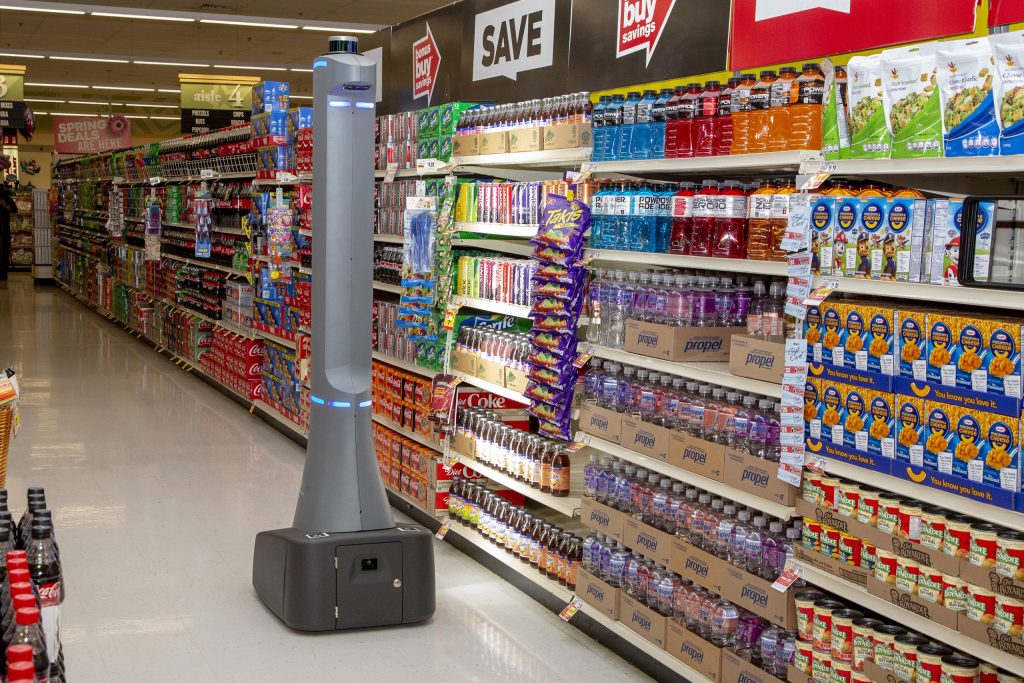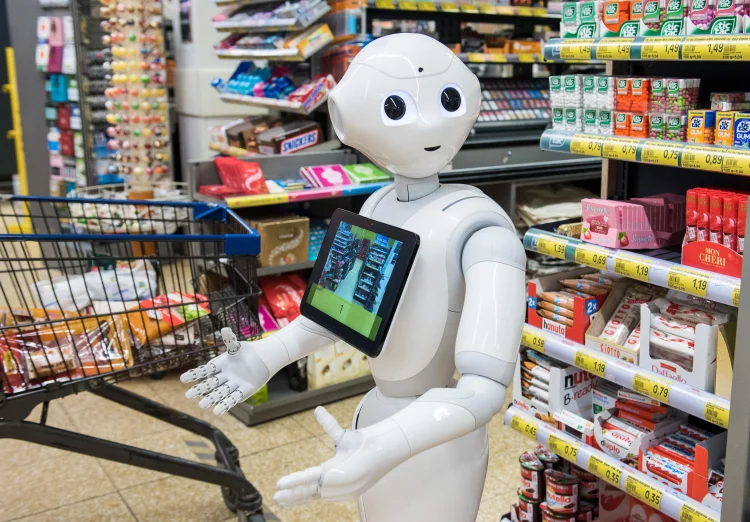Introduction
The retail industry is undergoing a dramatic transformation, driven by rapid advancements in robotic technologies, artificial intelligence (AI), and automation. As consumers demand faster, more personalized, and seamless shopping experiences, retailers are increasingly turning to robots and smart technologies to meet these expectations. Among the most notable innovations are robotic shopping assistants, smart checkout systems, and automated inventory management, each of which plays a pivotal role in improving customer satisfaction and optimizing operational efficiency.
This article will delve into how these technologies are reshaping the retail landscape, enhancing the consumer experience, and providing retailers with new opportunities for growth and competitiveness.
Robotic Shopping Assistants: Enhancing In-Store Customer Interaction
1. The Rise of Robotic Shopping Assistants
A robotic shopping assistant is an autonomous system designed to interact with customers, assist in product searches, and provide guidance throughout the shopping process. These robots are equipped with AI, speech recognition, and navigation systems, allowing them to move around store environments and engage directly with shoppers.
In some retail stores, robots like Pepper, created by SoftBank Robotics, serve as friendly and interactive guides, offering product information, promotions, and even answering customer inquiries. These robots are designed to enhance the shopping experience by providing a more personalized and engaging approach compared to traditional in-store assistance.
The advent of robotic shopping assistants is particularly important in environments where customer service demand is high, but human staff may not be readily available. These robots can take on tasks like greeting customers, assisting with product searches, and providing directions to specific aisles. In doing so, they reduce wait times and streamline the shopping experience.
2. Personalization and Customer Interaction
One of the most exciting aspects of robotic shopping assistants is their ability to personalize the shopping experience. By analyzing consumer preferences, browsing history, and even previous purchases, robots can recommend products tailored to the individual shopper’s tastes.
For instance, a robotic assistant could suggest similar items or highlight sales on products that align with a customer’s past buying behavior. This personalized service not only improves customer satisfaction but also increases the likelihood of impulse buys and repeat visits, thereby driving sales.
Furthermore, these robots can engage in conversational commerce, enabling customers to ask questions about products, promotions, or store information in real-time. In stores with large product selections or complex layouts, having a robot to provide instant, accurate information is invaluable in keeping customers engaged and informed.
3. Enhancing Accessibility
Robotic shopping assistants can also improve accessibility for customers with disabilities. For example, robots can be equipped with voice-assisted technologies that help visually impaired customers navigate the store. By providing auditory guidance, robots make it easier for individuals with special needs to locate products and move through the retail environment independently.

Smart Checkout Systems: Streamlining Payment Processes
1. The Evolution of Checkout Technology
Gone are the days when customers had to wait in long lines to pay for their purchases. Thanks to the development of smart checkout systems, retailers can now offer contactless, fast, and efficient payment experiences. These systems use a combination of AI, machine learning, biometrics, and RFID (radio-frequency identification) to facilitate quick and accurate transactions.
One of the most common smart checkout technologies is self-checkout, which allows customers to scan and pay for items without requiring cashier assistance. Many supermarkets and retail stores have integrated self-checkout kiosks where customers can quickly check out their purchases. However, AI-powered systems are advancing beyond simple barcode scanning. For instance, systems like Amazon Go employ computer vision and sensor fusion to automatically detect items as they are picked up and placed in a shopping cart, charging the customer automatically without any scanning process.
2. Seamless Payments and Enhanced Convenience
Smart checkout systems are designed to offer seamless payments and enhanced convenience for shoppers. In addition to traditional payment methods like credit and debit cards, some systems now integrate mobile payments (e.g., Apple Pay, Google Wallet) and biometric identification (e.g., fingerprint or facial recognition). These features enable customers to complete transactions with a single touch or glance, eliminating the need for physical cards or cash.
For example, Amazon Go‘s checkout-free stores rely on cameras, sensors, and AI to track the items customers pick up, automatically adding them to a virtual shopping cart. Customers simply walk out of the store, and their account is charged for the items they take. This frictionless experience not only saves time but also minimizes the physical contact that was common in traditional checkout processes, which is especially important in the post-pandemic era.
3. Reduced Human Error and Enhanced Security
In addition to improving convenience, smart checkout systems reduce human error during the payment process. Traditional checkout methods rely on cashiers to scan items correctly and process payments, which can sometimes result in mistakes or discrepancies. By automating this process, retailers can ensure greater accuracy and faster transactions.
Moreover, these systems often come with advanced security measures such as encrypted transactions, real-time fraud detection, and the ability to monitor for suspicious activity. By utilizing AI and machine learning algorithms, these systems can identify patterns of behavior that may indicate fraudulent transactions and immediately alert store management.
Automated Inventory Management: Boosting Efficiency and Reducing Stockouts
1. The Challenge of Inventory Management
Inventory management has always been a complex challenge for retailers. Maintaining the right stock levels, ensuring items are in the correct locations, and forecasting demand accurately are all tasks that require significant time and effort. Stockouts, where an item is out of stock, can lead to lost sales and disappointed customers, while overstocking can result in high carrying costs and the need for markdowns.
To address these challenges, many retailers are adopting automated inventory management systems that utilize robots, drones, AI, and IoT technologies to track, monitor, and replenish inventory in real-time.
2. The Role of Robots in Inventory Tracking
Robots equipped with sensors, RFID, and computer vision are now being used to automate inventory tracking in warehouses and retail stores. These robots can scan shelves, identify which products are running low, and automatically notify staff to restock shelves. This reduces the need for manual inventory checks and allows stores to maintain optimal stock levels.
For instance, Simbe Robotics offers a robot called Tally, which autonomously roams the aisles of stores to take inventory and check for misplaced products. This allows retailers to ensure that stock levels are accurate and that products are located in their proper places. By automating this process, retailers can save time, reduce human error, and minimize stockouts.
3. Real-Time Stock Monitoring and Demand Forecasting
With the integration of AI and machine learning, automated inventory systems can also provide real-time stock monitoring and demand forecasting. These systems analyze data from past sales, current trends, and external factors such as seasonality or promotions to predict which items are likely to be in high demand.
By leveraging these predictions, retailers can optimize their stock levels, ensuring that they have enough inventory on hand to meet customer demand without overstocking. This leads to more efficient operations, fewer lost sales, and reduced waste.
Impact on Consumer Experience: A Seamless and Efficient Shopping Journey
The implementation of robotic shopping assistants, smart checkout systems, and automated inventory management is significantly improving the overall consumer shopping experience. Customers can now enjoy:
- Faster service: With automation taking over tasks like inventory checks and checkout, shoppers can spend less time waiting in line or searching for items.
- Personalized experiences: AI-powered robots and systems can provide tailored product recommendations and customer service, enhancing the shopping experience.
- Convenience: Contactless and AI-driven payment solutions make transactions faster and more convenient, reducing friction in the purchasing process.
- Enhanced accessibility: Robotics and AI technologies help make shopping easier for individuals with disabilities, ensuring that all customers have an inclusive shopping experience.
Conclusion
As robotic technologies, smart checkout systems, and automated inventory management continue to evolve, they are playing an increasingly central role in shaping the future of retail. These innovations not only make shopping more efficient but also improve the overall consumer experience, offering personalized service, faster checkouts, and accurate stock management.
For retailers, the integration of these technologies is proving to be a powerful way to stay competitive in a rapidly changing market. The seamless and efficient shopping journey provided by robots and AI-driven systems is not only appealing to today’s consumers but is also paving the way for a more sustainable and profitable future for businesses.
As this technology advances further, the potential for transforming retail is limitless, and businesses that embrace it will likely see improved customer loyalty, higher sales, and a significant edge over their competitors.







































